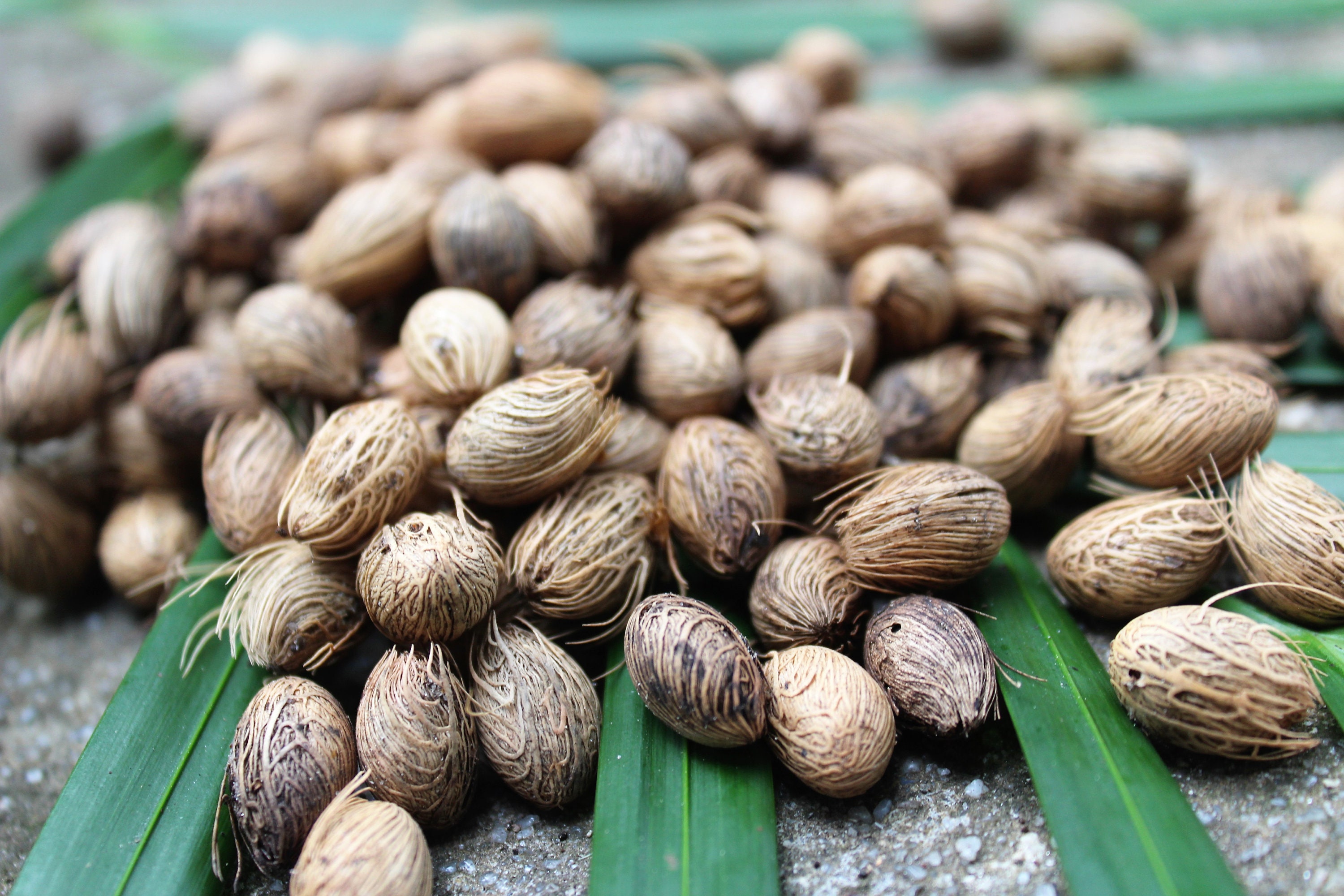Areca palm plant seeds, with their unique characteristics and diverse applications, invite us on an enlightening journey through their biology, uses, and cultivation. This comprehensive guide delves into the captivating world of these seeds, unveiling their fascinating properties and practical significance.
From the intricate germination process to the traditional medicinal practices, from culinary delights to industrial applications, we unravel the multifaceted nature of areca palm plant seeds. Discover the optimal conditions for their growth, the common pests and diseases that affect them, and the step-by-step process of cultivating these remarkable plants from seeds.
Areca Palm Plant Seed Biology

Areca palm seeds, scientifically known as Areca catechu, are ovoid in shape and measure approximately 2-3 cm in length and 1-2 cm in width. They have a smooth, brown to black seed coat that encloses a white, fleshy endosperm and a small embryo. The endosperm provides nourishment to the developing seedling during germination.
Seed Germination
Areca palm seeds require specific conditions for successful germination. These include:
- Warmth: Seeds germinate best at temperatures between 25-30°C (77-86°F).
- Moisture: Seeds should be kept moist but not waterlogged.
- Light: Seeds require bright, indirect light to germinate.
- Time: Germination can take several weeks to several months.
Optimal Conditions for Seed Growth
Once the seeds have germinated, they need to be provided with optimal conditions for growth. These include:
- Soil: Areca palms prefer well-drained, sandy soil with a pH between 6.0 and 7.0.
- Light: Seedlings require bright, indirect light.
- Water: Water the seedlings regularly, allowing the soil to dry out slightly between waterings.
- Fertilizer: Fertilize the seedlings every 2-3 months with a balanced fertilizer.
Areca Palm Plant Seed Uses: Areca Palm Plant Seeds

Areca palm plant seeds have been utilized for centuries in various traditional medicinal practices and culinary applications. They also hold significant industrial value due to their unique properties.
Traditional Medicinal Uses, Areca palm plant seeds
Areca seeds possess a range of medicinal properties, including anti-inflammatory, antimicrobial, and antioxidant effects. Traditionally, they have been used in Ayurvedic medicine to treat various ailments such as digestive disorders, respiratory problems, and urinary tract infections. In some cultures, the seeds are chewed to promote oral health and freshen breath.
Culinary Applications
Areca seeds are consumed in various culinary preparations worldwide. In some Asian countries, the seeds are chewed with betel leaves and slaked lime as a mild stimulant. The seeds are also used as a spice in certain dishes, adding a nutty and slightly bitter flavor. In some parts of India, the seeds are roasted and ground into a powder that is used as a thickening agent in curries and other dishes.
Industrial Uses
Areca palm plant seeds are also valued for their industrial applications. The seeds contain a high percentage of cellulose, making them a suitable raw material for the production of paper, textiles, and other cellulose-based products. The seed husk is also used as a natural fertilizer due to its high nutrient content.
Areca Palm Plant Seed Cultivation

Cultivating areca palm plants from seeds is a rewarding and straightforward process that can bring a touch of tropical elegance to your home or garden. By following the steps Artikeld below, you can successfully germinate and grow these majestic plants from the comfort of your own space.
Seed Propagation Guide
Materials Required:
- Fresh areca palm seeds
- Seedling trays or pots
- Well-draining potting mix
- Plastic wrap or humidity dome
- Warm, sunny location
Steps Involved:
- Prepare the Seeds: Remove the seeds from the fruit and soak them in lukewarm water for 24 hours to soften the seed coat.
- Fill Trays or Pots: Fill seedling trays or pots with well-draining potting mix.
- Sow the Seeds: Sow the seeds 1 inch deep in the potting mix, spacing them 2 inches apart.
- Cover and Keep Moist: Cover the seeds with plastic wrap or a humidity dome to maintain moisture. Keep the potting mix moist but not soggy.
- Provide Warmth and Light: Place the trays or pots in a warm, sunny location with temperatures between 75-85°F (24-29°C).
- Monitor Germination: Germination typically occurs within 4-6 weeks. Remove the plastic wrap or humidity dome once seedlings emerge.
Common Pests and Diseases
While areca palm plants are generally hardy, they can be susceptible to certain pests and diseases. Here’s a list of common issues and preventive measures:
Pests:
- Spider Mites: These tiny pests feed on plant sap, causing yellowing and webbing. Use insecticidal soap or neem oil to control them.
- Mealybugs: These soft-bodied insects produce a white, waxy substance. Apply rubbing alcohol or horticultural oil to kill them.
- Scale: These armored insects attach themselves to leaves and stems, sucking plant sap. Use horticultural oil or insecticidal soap to remove them.
Diseases:
- Root Rot: Overwatering can lead to root rot, causing yellowing leaves and stunted growth. Improve drainage and reduce watering frequency.
- Fusarium Wilt: This fungal disease causes leaves to turn yellow and wilt. There is no cure, so remove infected plants to prevent spread.
- Leaf Spot: This fungal disease causes brown spots on leaves. Treat with fungicides containing copper or sulfur.